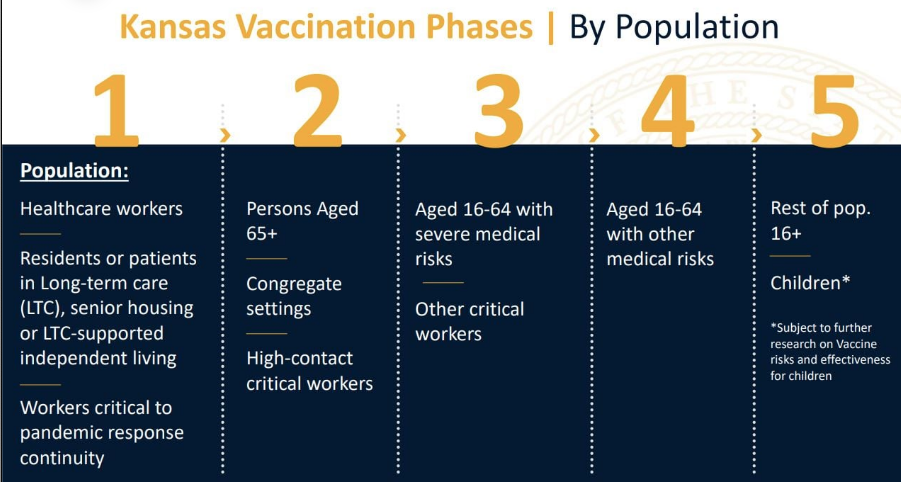KANSAS CITY, Kan. (AP) — Kansas could finish immunizing seniors, meatpacking employees and other essential workers and move on to the next phase of coronavirus vaccinations by next month, top officials say.
Dr. Lee Norman, the head of the state health department, said in a webcast Tuesday with University of Kansas Health officials that he anticipated the state would begin the third phase of vaccinations in four weeks or “a little bit less.” The next phase includes people aged 16 to 64 with medical conditions that put them at severe risk if they are infected with COVID-19, including cancer and Type 2 diabetes, as well as workers in critical industries such as information technology and government.
He said some rural communities already have finished vaccinating people in the current phase, which is the state’s largest and includes about 1 million people, or about one-third of the state’s 2.9 million residents.

“They therefore are on pause as we call it for receiving additional vaccine allocation so that we can reallocate to the other counties that are still in phase 2 and moving in an orderly manner through phase 2,” Norman said. “As a state, it is good idea to not have some counties move to phase three, four, five while there are other counties still in phase 2.”
The second phase includes those over the age of 65, critical workers including firefighters, law enforcement officers, meatpacking employees, grocery store workers, teachers and child-care workers, as well as prisoners.
Gov. Laura Kelly said at a new mass vaccination site in a hard hit area of Kansas City, Kansas, that there was “no drop dead date” for moving to the next phase but that she anticipated it would happen at the beginning of April.
“That, of course, is all dependent on getting enough vaccines from the federal government to finish up phase two,” Kelly said after listening to several community leaders discuss challenges that must be overcome to fix racial vaccination disparities.
The rate of vaccinations among Kansas residents has been heavily skewed, with 121.75 out of every 1,000 white residents vaccinated, compared to 54.60 out of every 1,000 black residents and 78.83 out of every 1,000 Hispanic residents, state vaccination data shows.
“We certainly haven’t intentionally not vaccinated in communities of color and our vulnerable communities. In fact, part of the way we have been thinking about this is to look at our vulnerable communities,” Kelly said, adding that it was clear the state had not addressed the problem aggressively enough.
Kelly said one of the reasons that meatpacking workers were moved up on the priority list was to target “socially vulnerable communities.”
Teachers — another priority — have been vaccinated “for the most part,” with the exception of “a few second doses that need to go into people yet this month,” Norman said.
That’s led schools to gradually shift from virtual to in-person learning. The Board of Education in the Wichita district, which is the state’s largest with about 47,000 students, voted 6-0 Monday to allow middle and high school students to head back to class five days a week on March 29.
Elementary students already had been in-person five days a week. But older students are attending hybrid classes — at home part of the time and and in-person the rest of the time. The district will continue a virtual option, though.





